I recently moved from Boston to Oklahoma City. My wife got offered a tenure-track position at the University of Oklahoma, which was too good an opportunity for her career for us to pass up. Prior to the move, I had done a lot of traveling in the US, but almost exclusively on the coasts, so I didn't know what living in the southern Midwest would bring, and I was a bit trepidatious. It has turned out to be a fantastic move. There is a thriving high-tech startup culture here. I've been able to hire some great talent out of the University, and we're now planning to build up a big Exaptive home office here. Even more important, I was delighted to find a state that was extremely focused on fostering creativity and innovation. In fact, the World Creativity Forum is being hosted here this week, and I was asked to give a talk about innovation. As I thought about what I wanted to say, I found myself thinking about . . . cowboys.
Before I came to Oklahoma the image I had in my mind was pretty much like this:

And while there is certainly a cowboy culture here, I have yet to see anyone in downtown Oklahoma City ride off on a horse into the sunset. This Marlboro Man image is not the Oklahoma of today, but nevertheless it's an image that persists, quite powerfully, in our collective imagination.
The more I thought about my new home in OKC, and the mythology of the Marlboro Man, the more I thought about the myth of the lone genius. We love the idea of the lone genius. Perhaps the desire to think of innovators this way is particularly American? Perhaps it comes from our history and our ethos, born from the enviable rugged independence of the frontiersman and reinforced in the next generations by endless cigarette ads? We often use Thomas Edison as the example of the quintessential inventor, and when I did a Google image search, I was quite struck by the pictures I found, like this one:
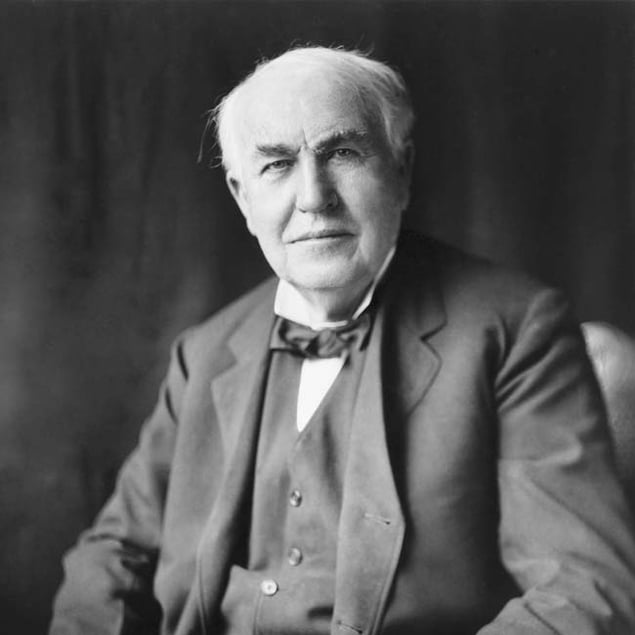
The above picture of Edison strikes me as the intellectual equivalent of the Marlboro Man image. We know this picture of Edison isn't the whole story. We know he had a huge team of people working under him in his lab, all of them conspicuously absent from the picture above. We know he performed in-depth research on other inventors' work, like that of Joseph Swan, who had invented a less practical but functional light bulb years before. Swan's picture is yet another Marlboro Man lone inventor image:
I think that in order to push the discourse about innovation ahead, we need to find new ways to describe and exalt our inventors. Indeed, Edison was a genius, as was Swan, but their genius lay in how they synthesized previous work and connected together the contributions of others, adding their own contributions as was needed to fill in the gaps.
It's a challenge to capture, explain, and promote this view of innovation and innovators. Increasingly we are recognizing that ideas are networks, but this recognition gives us the challenge of figuring out how to represent them. The field of data visualization has had a notoriously hard time figuring out how to display complex networks. They so frequently end up looking like a big mess that the term "hairball" has become a technical term in the field, for reasons the network below makes obvious.
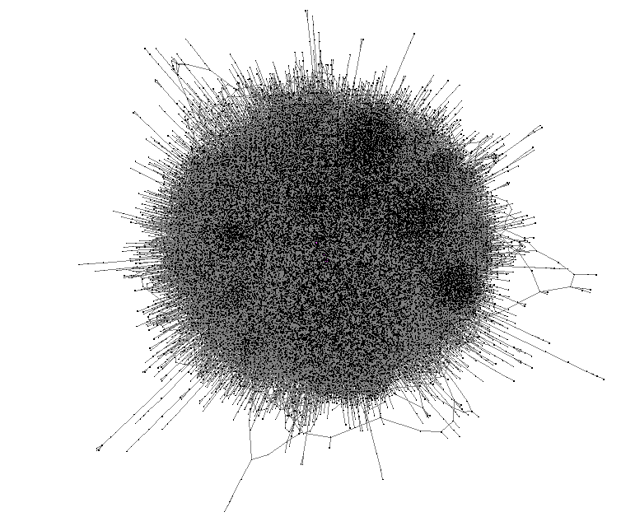
If we are to push the discourse about innovation forward, we need to find ways to visualize idea networks in ways that are just as striking and inspirational as the portraits of Edison and Swan.
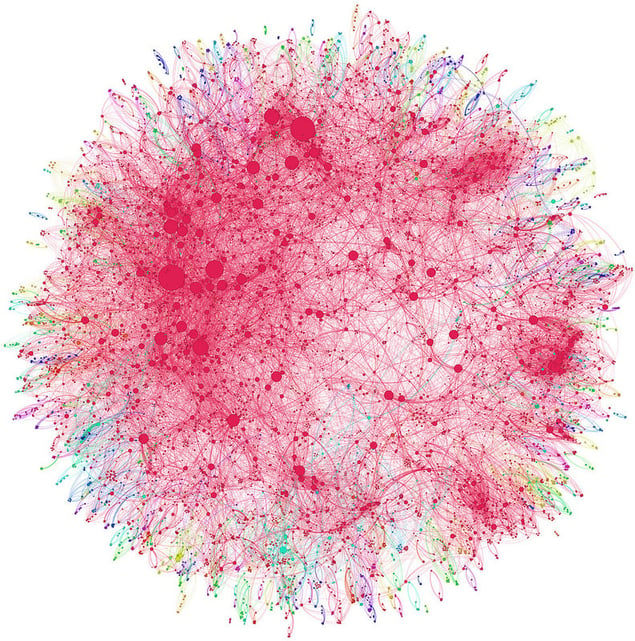
This image, created by London-based group Social Physics, shows the co-authorship of papers by researchers studying Hepatitis C. It's still a bit of a hairball but certainly a beautiful one.
A while back we used Exaptive to analyze the hundreds of different data visualization projects that were collected on the well-known site VisualComplexity, and to draw a network of the contributions based on their field of study and author:
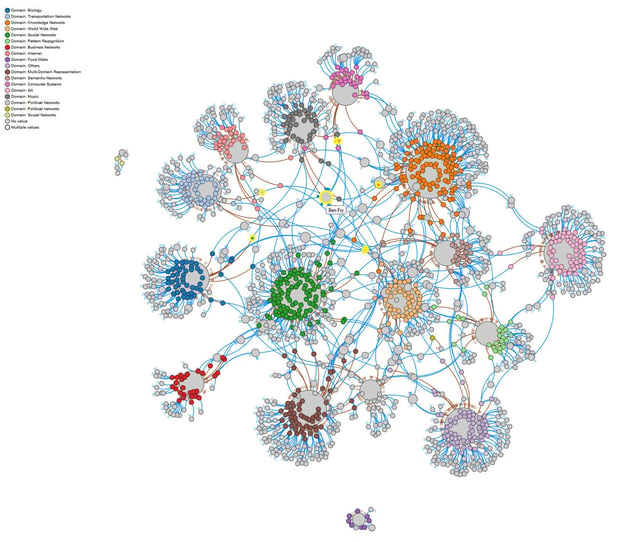
Once we did so, data visualization guru Ben Fry was clearly revealed as a hub in the network, his many projects spanning many disciplines. Which is a better picture of Ben the innovator, the one above where he is a hub connecting many disciplines or the one below in the style we are more accustomed to?
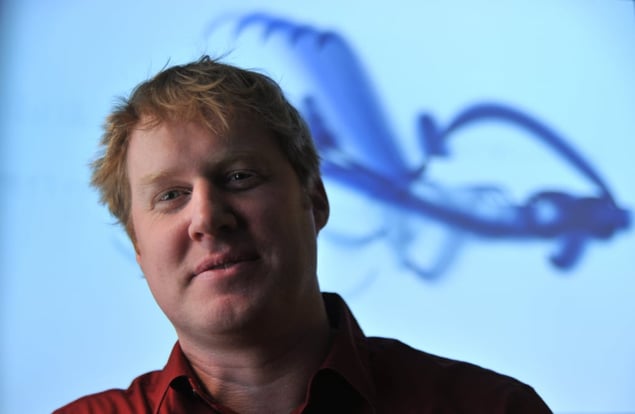
As a photographer, I love portraits like the one above. As a student of innovation, I have come to love network diagrams much more. As a software architect, when I sat down to design the Exaptive platform, it was clear to me that it needed to be inherently based on a network structure. To represent that underlying structure, we decided to use a dataflow programming paradigm within our development environment:
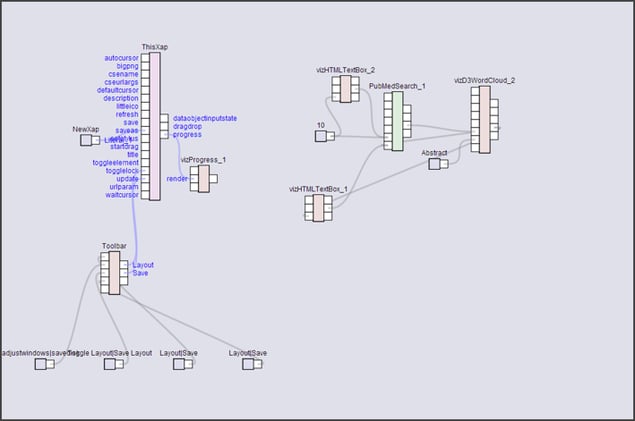
All programming is modular. All programmers build programs leveraging libraries of functions built by others, but the act of writing a program often obfuscates these connections, much like the act of invention often obfuscates all the prior art that made it possible. When we designed Exaptive we wanted to allow people to build new things, but we wanted to do so within a framework that preserved the network of how they did so. We believed that the network was the idea itself and equally important as any particular output. We also believed that the most important things behind each of those code modules was the person who wrote them and the person who used them. We believed that any system that was making it easier to connect code together should make it easier to connect the people behind that code together too. We recently had an exciting project show us just how important this is when it comes to generating new and novel solutions.
A few weeks ago we started work on an interesting data science project. Our contact at a large NGO had a bunch of longitudinal data about every country on Earth, and wanted help trying to group the countries together by these data. Matt Coatney, a data scientist who was using the Exaptive platform to experiment with neural networks on time-series data, decided to take on the challenge. He started experimenting with converting the country time-series curves into alphabetic sequences. He was thinking of DNA and hoping that once he had alphabetic sequences he could use DNA clustering algorithms to cluster the countries like they were different genetic codes. Exaptive's Science Advisor, David Merberg, a PhD cell biologist, got alerted to the work Matt was doing. When he saw the letter strings coming out of Matt's algorithm, he remarked how they were more like proteins than DNA and perhaps better suited to protein clustering techniques. This led Matt to push his algorithm in a new direction, ultimately producing a novel way of clustering global country data based on the techniques that David clued him in to from genetics. It was innovation in action, and if I were to draw a picture of it, it would look like this:
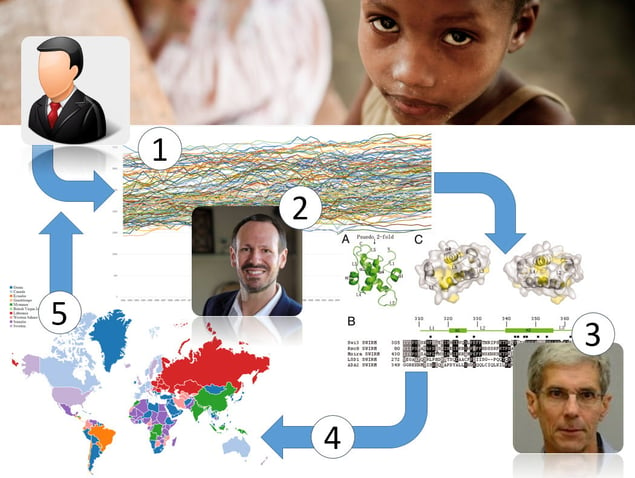
This to me is what true invention looks like. This project involved a great exaptation, taking something from one field and applying it in another in a new way. It involved three different people, from three different disciplines, living in three different states, and it all got done in three weeks. It's a messier picture than the nice neat portrait of Thomas Edison standing proudly alone in his lab, but I think these are exactly the sorts of pictures we need to get better at learning how to communicate. We need to better learn how to value the messy interconnected hairballs of idea networks and give them just as much swagger as those cowboys riding off into the sunset.

Comments